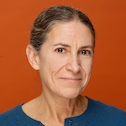It looks like a rolling suitcase, a mask and some tubes, but for some people who can’t breathe properly, the device will mean freedom.
Those with damaged lungs who are waiting for a transplant, too sick for surgery or just temporarily injured normally have to stay hooked up to bulky machinery in a hospital to stay alive. But a new invention, developed by engineers and doctors from the University of Maryland, means they could soon return home and go about more of their lives.
“Grandpa can come [along] now,” said Dr. Bartley P. Griffith, a professor of transplant surgery in the university’s School of Medicine, about the artificial lung support device he helped create and commercialize before it was bought by Johnson & Johnson.
It’s the kind of innovation that University of Maryland officials expect to foster in a new center in the University of Maryland BioPark, where faculty, students and researchers from the College Park and Baltimore campuses will share labs and other space.
The center is the latest effort by the university to develop and commercialize technology that officials say will save and improve people’s lives. It will also become part of the region’s rising biotech industry, which taps into local universities such as Maryland and Johns Hopkins University, as well as nonprofits and private companies, to develop and market cutting-edge technology.
Read More
Officials held a ceremony Friday with officials from the Baltimore-based University of Maryland School of Medicine and the College Park-based A. James Clark School of Engineering and others to show off the labs encompassing the fourth floor of 4MLK, the newest BioPark building in downtown Baltimore.
They accepted a $10 million gift from the Edward St. John Foundation and formally named the center the Edward & Jennifer St. John Center for Translational Engineering and Medicine.
Edward St. John, a businessman and philanthropist, graduated from the University of Maryland, College Park with an engineering, degree and has previously donated millions to other projects in the university and affiliated medical system.
St. John said the center would be where “diverse minds unite, each contributing their unique expertise, pushing the boundaries of what’s possible in medicine.”
Dr. Bruce E. Jarrell, president of the University of Maryland, Baltimore, and both a doctor and an engineer, said such centers, which merge engineering and medical research, “were missing from the landscape,” until recent years.
“Together [researchers] will discover innovative treatments and breakthrough technologies that simply cannot emerge when each works in isolation,” he said. “This synergy opens exciting new possibilities for translating research into tangible solutions that will address today’s most pressing health challenges.”
State officials have noted that other parts of the country are strong competition to Maryland’s biotech industry.
The region has no shortage of research, but officials say it can fail to lure investment and turn that research into products. Once a start-up launches, it often ends up moving to another state with a more established biotech industry.
In recent years, the state has been designated a federal tech hub, allowing it to compete for funding, and launched several types of incubators to help companies launch and get through investment and regulatory hoops.
One big investment on that front, $100 million, came a little over a year ago from Baltimore Ravens owner Steve Bisciotti. His foundation launched a nonprofit called Blackbird to help shepherd promising therapies from local university labs into companies, providing funding and guidance.
University of Maryland, College Park President Darryll J. Pines said the university’s new center will give the state an edge.
“Whether it is the invention of new devices and instruments or improved analysis, this center will be leading the way in advancing how clinicians work and how patients heal,” he said.
The lab space will encompass the fourth floor of the new building. Downstairs will be an incubator for startup companies where mentoring and other resources will be available. There will also be space in the building for students enrolling in new programs that will offer, for example, an undergraduate engineering degree and a medical school education.
Researchers touted their proximity to other institutions of the building and the BioPark, located across Martin Luther King Jr. Boulevard from the University of Maryland School of Medicine and other schools.
Giuliano Scarcelli, an associate professor in the Fischell Department of Bioengineering, touted collaboration with Dr. Osamah J. Saeedi, professor of ophthalmology and visual sciences at School of Medicine, in a video officials played Friday to highlight the new technology he is developing to monitor eye pressure and help screen for glaucoma.
“You can’t do this over Zoom,” he said.



Comments
Welcome to The Banner's subscriber-only commenting community. Please review our community guidelines.